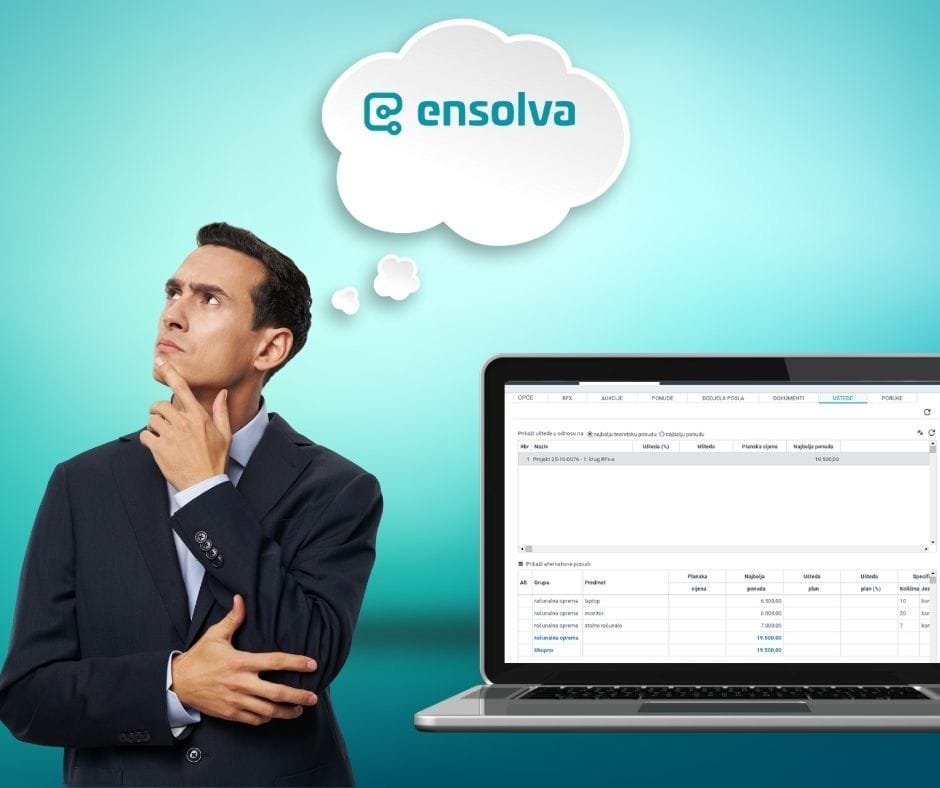Procurement and supply problems can cost a company dearly, so avoiding these problems is an imperative for successful business. However, despite all efforts to avoid such problems, mistakes do happen. It can happen, which actually often happens, that an employee makes an unnecessary double order, that products arrive damaged, or that suppliers do not deliver goods on time, etc. The best way to reduce risk and mitigate potential procurement problems is to know how to recognize and deal with them before they become a bigger problem.
We bring you the most common mistakes in procurement and supply and tips on how to solve them:
1. Lack of Negotiation Skills
Insufficient negotiation skills usually result in paying higher prices. Not all suppliers are masters of negotiation, and we cannot expect them to be. While some people have a natural talent for negotiation, for those who don’t, it’s not something that can’t be learned.
To get around this problem, use centralized supplier databases and give procurement people training in negotiation skills. Create and maintain a list of preferred suppliers and prices of frequently purchased items in a supplier management system. This allows buyers to make informed purchases at the best price. In this way, you will actually minimize the risk of unnecessary spending caused by a lack of negotiation skills.
2. Non-compliance with Procurement Protocols
When employees do not follow procurement protocol, it can result with unauthorized expenditures and chaos. There are also cases where there is no formal procurement protocol, and this can result in unexpected bills, unauthorized expenditure, budget overruns and problems for finance and procurement teams. The solution to this problem is the introduction of a simple and affordable system for creating procurement requests and quick approvals. In systems like Ensolva, the procurement process is defined and a clear approval flow is set, and it is visible at all times who requested what and who approved what, so that nothing can go ‘under the radar’.
3. Purchasing from Unapproved Suppliers
Unauthorized procurement from unverified suppliers can result in higher costs and loss of confidence in the approved supply chain. This is often the case in large and fast-growing companies that do not have a centralized supplier database. Without a centralized database, employees will buy from any vendor. Create a centralized vendor database and encourage collaboration with approved vendors. Purchasing from approved suppliers can help in several ways. You’ll build relationships with your suppliers sooner, and you’ll be able to ask and get more from those you work with over a longer period of time. Approved suppliers are more likely to meet the company’s needs, provide better terms and prices, and become important business partners in the long run.
4. Unreliable suppliers
Working with unsuccessful suppliers can result in unreliable deliveries and low quality. Even when the price is profitable, it is not good for business in the long run. For example, persistent delivery delays can lead to production interruptions that will leave your customers dissatisfied. Regularly record data such as delivery time, completeness, quality, regulatory compliance and social responsibility using a supplier management system. If your supplier does not meet your criteria, it may be time to consider switching to a new supplier.
5. Payment of damaged or non-existent purchase items
Companies often lose money paying for lost or damaged goods. Such situations are inevitable, and the best thing you can do is reduce your company’s liability. Notify suppliers immediately of the problem and document all relevant information. Be sure to note the status of the shipment and document other important details (for example, if only part of the order arrived or if the order did not arrive at all). Keep all receipts and other relevant records of the problem to use them as a proof that the products you received were indeed damaged or lost in transit.
6. Duplicate Procurement of the Same Items
It often happens in practice that in procurement without an effective procurement approval protocol, employees inadvertently order the same items multiple times. When this happens, a lot of time and effort is wasted on refunds. To avoid these mistakes, adopt a procurement protocol that requires multi-person approval. This will reduce the possibility of duplicate purchases and the like. You should also set up a series of approvals in your procurement software, if you have one, to have better visibility and insights into the procurement process. In this way, you can monitor existing costs or the procurement plan. This generally leads to smarter and less wasteful procurement.
7. Hasty and Last-Minute Purchases
Hasty and last-minute purchases are a common occurrence in procurement challenges for startups and fast-growing companies. When a company launches a product or experiences rapid growth, those in charge usually want to ensure that everything is ordered and ‘put in place’ at once. This often means ignoring precautionary steps in the procurement process. Making emotional decisions and rushing to buy something can result in serious consequences in the long run. To prevent this problem, implement a structured procurement process and automate the request flow.
8. Procurement Frauds
Frauds can be carried out by employees alone or in cooperation with external persons. For example, an employee may inflate the prices of items being purchased or create fake accounts to steal money from the company. It may also receive refunds from suppliers or award a contract to a non-existent company. Whatever form the fraud takes, it’s important to stop it quickly to prevent a serious impact on your balance. Train employees to recognize the signs of fraud and use automation and checks to prevent fraud. Automate the procurement process using a centralized procurement system. With checks at different levels, employees will find it harder to exploit loopholes to their advantage.
9. Spending outside the company’s budget
Exceeding the budget in procurement can seriously affect the financial stability of the company, and this most often happens because employees do not have insight into the state of the budget. When employees do not have an overview of actual budgets that include approved (but not yet ordered or paid for) orders, they may be making unnecessary purchases. To prevent this from happening, track and control budgets with procurement management tools. This will give your procurement team an overview of paid items, ordered, approved and pending expense claims, and how these items will impact the budget.
10. Cost-Increasing Price Changes
Constant price changes can disturb the company’s budgets, and in this case the company is forced to exceed the budget or has to give up the purchase of necessary items. Use long-term contracts and price management strategies to protect against unpredictable changes. Protect yourself from price changes by stocking up, buy larger quantities of goods in the period when the price is the most favorable. You can also use long-term fixed contracts to ‘freeze’ prices and better manage your costs.
In conclusion, procurement issues are unavoidable, no matter how diligent and cautious you are. However, with the right approach and procurement management tools, you can effectively address and minimize their impact on your business. Procurement challenges should not be obstacles but opportunities for process improvement and optimization.



